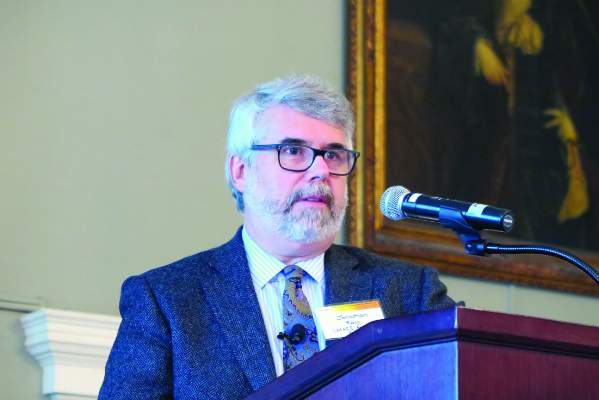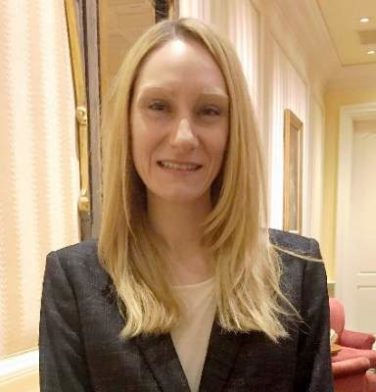EXPERT ANALYSIS FROM A BIOSIMILARS IN RHEUMATOLOGY SYMPOSIUM
BOSTON (FRONTLINE MEDICAL NEWS) – For rheumatologists, the primary selling points of biosimilar agents are their presumed efficacy and safety, and their promised cost savings, compared with the reference product, an original biologic agent.
But market forces, patient worries, and provider concerns threaten to file off at least some of biosimilars’ presumed competitive edge, says a rheumatologist involved in the development of biosimilars to treat rheumatic diseases.
“The availability of lower-priced biosimilars, if they’re truly lower priced, should decrease the cost of treating patients; if they’re not lower cost, then this advantage is not holding true,” said Jonathan Kay, MD, professor of medicine at UMass Memorial Medical Center in Worcester.
In a perfect world, biosimilars would be more readily available to patients for whom the innovator biologic agent has been inaccessible, such as those with high copays or no health insurance. Greater access to effective biosimilars presumably would reduce disability, morbidity, and mortality associated with inflammatory diseases, he said at a biosimilars symposium sponsored by Corrona, a business providing registry data and consulting services to biopharmaceutical companies.
But the world is far from perfect, and there are a host of educational, financial, and societal barriers to more widespread acceptance of these agents, he said.
Misperceptions
A common concern among patients and uninformed providers is that biosimilars are the same as biomimics – cheap, usually foreign-made knockoffs of existing drugs that have not undergone regulatory scrutiny and may be neither effective nor safe.
“Biomimics scare patients and scare physicians,” he said, “and misunderstanding of the regulatory approval process, or lack of understanding of the regulatory review or approval process, also intimidates individuals about biosimilars.”
Acceptance of biosimilars is also hampered by a lack of long-term, real-world efficacy and safety data. This is due, in part, to the “inverted pyramid” nature of the biosimilar development and approval process, which starts with myriad analytical, chemical, and functional characterization studies; nonclinical studies; and pharmacokinetic and pharmacodynamic analyses, but only one or two clinical trials. In contrast, the development process for innovator biologics starts with molecular characterization, then moves through the traditional drug development stages of laboratory and preclinical studies, phase I and II trials, and finally phase III registration trials and post-marketing studies.
Because most of the drug development for biosimilars happens behind the scenes, patients and their physicians are often leery about the finished product, no matter how rigorously it was developed. Similarly, there is a paucity of data on long-term immunogenicity of biosimilars, Dr. Kay noted.
Extrapolating about extrapolation
The idea of extrapolation of indications for biosimilars is also an alien concept to many. Simply put, if a reference product is approved for rheumatoid arthritis and has additional indications for treatment of psoriatic arthritis, the approved biosimilar to the original can be extrapolated to be effective against the same indications, even if it has only been tested against one of the indications.
“We have a tremendous amount of clinical experience not only in randomized, controlled clinical trials but also years of marketing experience showing that the reference product is effective and safe for each of the indications for which it’s been approved, and knowing that the biosimilar is essentially like another [manufacturing] run of the reference product allows us to extrapolate indications. But until you become comfortable with accepting that concept, it is certainly a barrier to biosimilars,” he said.
Patients are also scared by the issue of interchangeability, which would allow pharmacists to substitute one product for another without approval of either the patient or the prescribing physician. However, there are currently no biosimilar agents approved as interchangeable by the Food and Drug Administration.
What cost savings?
In the United States, the price of marketed biosimilars has been only 15% lower than that of the reference product, Dr. Kay noted, and multiple discount programs and rebates offered by marketers of the reference product make it difficult to figure out the actual costs of the drugs to payers and whether biosimilars are actually any cheaper.
Additionally, clinicians may be reluctant to adopt biosimilars because of a Centers for Medicare & Medicaid Services billing quirk that currently offers only a single “J” code with a blended reimbursement for all biosimilar agents of a reference product, regardless of cost differences.
Nordic competition model
Dr. Kay pointed to the Norwegian Tender System as a model for using biosimilars to drive down drug costs.
The Norwegian Drug Procurement Cooperation (LIS) annually procures drugs for all publicly funded hospitals, which ensures that prices offered to hospitals for patent-protected medicines are lower than those offered for distribution to wholesalers or pharmacies. Under this system, cost is the driving factor, assuming that drugs in a similar class have similar efficacy and safety, he said.
In 2015, when Norway was purchasing infliximab, it chose Remsima, the biosimilar, over the reference product Remicade, resulting in a 69% cost saving.
The potential interchangeability of Remsima and Remicade in patients with rheumatoid arthritis, spondyloarthritis, psoriatic arthritis, ulcerative colitis, Crohn’s disease, and chronic plaque psoriasis is currently being explored in the NOR-SWITCH trial .
Dr. Kay disclosed receiving institutional grants from AbbVie, Genentech, Roche Laboratories, and UCB, and serving as a consultant for those companies.





